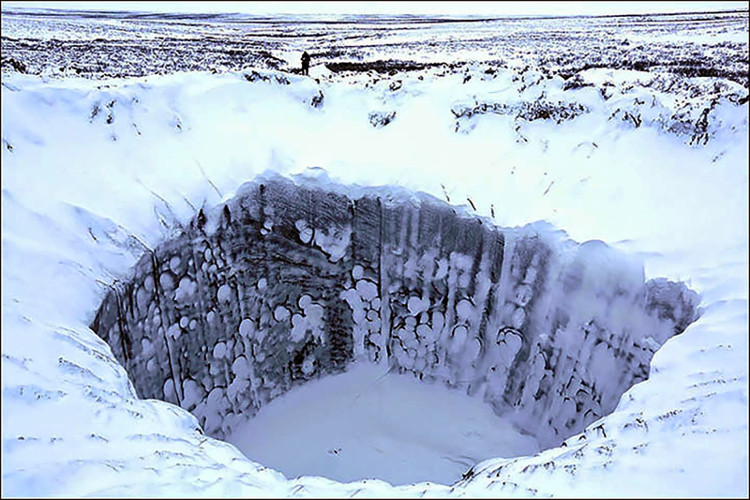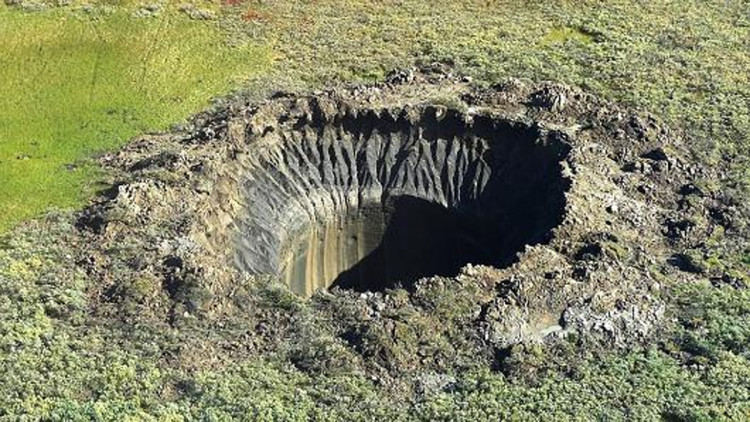'Rise' of death in Siberia threatens planet life
Climate change causes cold Siberia to warm up, creating a series of giant death-holes that threaten the life of mankind on Earth.
According to CNBC, the death toll is increasing in Siberia, potentially incalculable consequences, scientists say.
The cold Siberia lands have a permanent frozen surface. The phenomenon of warming Earth causes this permafrost to melt, threatening human life.

Deaths appear more and more in Siberia, Russia.
'The last time we recorded ice melting in Siberia was 130,000 years ago. It is a natural phenomenon due to the change in Earth orbit, 'said Gideon Henderson, professor of Earth science at Oxford University.
'The unprecedented thing is the speed of Earth's warming. The warming of Earth 130,000 years ago only happened for thousands of years. Today's warming phenomenon is fast and rapid, after only a few dozen years' , Mr. Henderson said, emphasizing that more death will occur.
The first negative impact is that the hot Earth will get hotter in the future.'The ice melts so that carbon gas escapes, accelerating the Earth's warming process.'
In addition to carbon, methane is also released into the atmosphere, causing the risk of heating up to 86 times stronger. However, scientists have not yet determined the exact amount of methane released into the atmosphere.

The death pit makes the Earth's warming situation worse.
Currently, people living in northern Siberia can feel their living environment more and more harsh.
'People who live in icy areas rely on frozen ground to build infrastructure , ' said Mr. Henderson. 'Once the ground melts, the railroads will collapse, the route is split, the building sinks deep into the earth .'.
Sooner or later catastrophes will also affect industrial areas like other oil fields, gas fields.
In Russia, the government and fuel export companies are particularly concerned about these threats, said Vladimir Romanovsky, professor of geography at Alaska Fairbanks University.
- Decode the cause of a sudden death in Siberia
- Sea level will rise by 20m if the Earth's ice melts
- Discovering the planet can survive life
- The mystery of life after death: There is no heaven, only infinite sadness and darkness
- The most Earth-like planet shows up
- Rising sea level threatens the biodiversity of TBD
- An American scientist asserts that
- Learn new definitions of death
- Research data on life after death
- The mystery of life after death: The woman sees the future and reincarnates
- Life can be born first on a diamond planet
- Detecting planets that have life outside the Solar System
 'Fine laughs' - Scary and painful torture in ancient times
'Fine laughs' - Scary and painful torture in ancient times The sequence of numbers 142857 of the Egyptian pyramids is known as the strangest number in the world - Why?
The sequence of numbers 142857 of the Egyptian pyramids is known as the strangest number in the world - Why? History of the iron
History of the iron What is alum?
What is alum?